
Nepal, China relation depends on Tibetans
Aside from India, Nepal hosts the largest community of Tibetan refugees in the world. Estimates for an exact number vary due to the difficulty of documentation and record-keeping, since many individuals have no form of identification, but a 2020 UNHCR report put the figure at 12,540. This reflects a considerable drop in arrivals, resulting from Tibetans’ hesitation to settle in Nepal due to the discrimination they face from the state.
Sharing a land border with neighbouring China, the small Asian country has historically acted as a place of refuge for Tibetans, who began fleeing the Chinese invasion and occupation of Tibet in the late 1950s. There are now several camps for Tibetan refugees in Nepal, though most live in Kathmandu and surrounding areas, as well as in the central city of Pokhara.
But for the Chinese Communist Party (CCP), the topic of Tibet is off-limits. Nepal is no different: as Chinese influence continues to expand in Kathmandu, the CCP’s top priority in its relationship with Nepal remains centered around the control and repression of the nation’s Tibetan refugee community.
Chronology of a crackdown
Beijing and Kathmandu opened diplomatic relations in 1955, signing a treaty the next year in which Nepal recognised Tibet as part of China. Matters became complicated in the 1960s, when the CIA began funding the Tibetan resistance movement to fight the CCP. Beijing offered Kathmandu troops to suppress the rebellion, while Nepali propaganda campaigns painted the rebels as Indian agents. The Nixon administration ultimately halted support for the uprising, as the intelligence the rebels offered on China was not enough to outweigh the possibility of opening talks with Mao — an attractive prospect that could further isolate the USSR in the midst of the Cold War.
Nepal’s crackdown on Tibetan refugees started off gradually. Before King Birendra’s assassination by his own son in 2001, things were marginally better for the Tibetans, who at least had a space in which to express their grievances. Yet according to Amish Mulmi’s recently published book All Roads Lead North, as early as 2002 Kathmandu was already starting to face Chinese orders regarding the Tibetans, which it expressed to the US ambassador. For the first time, Nepal canceled celebrations of the Dalai Lama’s birthday. In 2005, the Dalai Lama’s Nepali office was shut down, also as a result of pressure from Beijing. Mulmi’s book also documents incidents in 2003, when Chinese military officials actually crossed into Nepali territory to shoot at American climbers, they believed to be Tibetans escaping Tibet, as well as in 2006, when Chinese guards shot and killed a 17-year-old Tibetan who was part of a group of 76 attempting to flee across the border.
Everything changed in 2008. Nepal had just become a republic, and Beijing was hosting the Summer Olympics. The CCP had to ensure it got its foot in the door as a fledgling Nepal transitioned to a new form of government. While the world’s attention was locked on China for the athletic event, China had to uphold its reputation and make sure no trouble was started next door. Much to Beijing’s displeasure, Tibetans took the opportunity to demonstrate for their rights in countries like Nepal. Hundreds of protesters faced arrest. From that point forward, the CCP began to aggressively develop stronger links to political parties in Nepal, in order to make certain it could keep the Tibetan refugees there in check.
In 2009, China promised Nepal loans to develop infrastructure, agriculture, energy and tourism. Beijing also made pledges to alleviate poverty in Nepal, including agricultural training and reduced tariffs. In return, Nepal reiterated the vow to prohibit ‘anti-China or separatist activities’ on its soil. Kathmandu ramped up its border patrol along the China-Nepal frontier, giving 33 Tibetans who traveled to Nepal to China and breaking its unofficial agreement with the UNHCR to permit Tibetans to go via Nepal on their way to India. One US diplomatic cable, published in 2010 by WikiLeaks, even states, ‘Beijing has asked Kathmandu to step up patrols [and] make it more difficult for Tibetans to enter Nepal.’
The ‘One China’ policy is crucial to the Nepal-China relationship. In a 2009 joint statement, Nepal reaffirmed its adherence to the principle and it has continued to do so ever since. The Dalai Lama, whom China calls a separatist, has therefore never visited Nepal, though it is considered to be the birthplace of the Buddha. In January 2012, Chinese Premier Wen Jiabao visited Nepal — the first time someone of that stature had done so in over a decade — to bolster economic and security cooperation, including pledging over $1.6m to strengthen Nepal’s police forces. Two months later, Nepali officials claimed that a cohort of Chinese intelligence agents came to Nepal to keep tabs and crack down on the activities Tibetan refugees had planned to commemorate the 1959 Tibetan uprising and the 2008 riots in Lhasa. Once Xi took power that same year, Chinese engagement in Nepal continued to grow.
Current conditions
Nepal’s police officers have said that the Chinese know details about Tibetans’ activities even before they do. China instructs Nepal’s authorities on how to handle Tibetan events and gatherings, informing them of the number of officers to be deployed and the policing techniques to be employed. Nepal’s crackdown on its Tibetan refugee population has taken the form of suppressing peaceful demonstrations; celebrations of Tibetan culture and holidays are highly restricted or banned, and met with periods of increased monitoring. A 2022 Human Rights Watch report claimed that Nepal ‘continues to restrict free assembly and expression rights of its Tibetan community under pressure from Chinese authorities’. Sources in Nepal reveal that most local police officers do not even know what the ‘One China’ policy is, but are automatically trained to prevent Tibetans from congregating.
Secretary at the Tibetan Refugee Welfare Office Karma Gyaltsen also says this restrictive behaviour is typical during high-profile visits by Chinese officials to Kathmandu: ‘During such occasions, we get verbal warnings from government authorities to not conduct any program. If we don’t follow the order, they detain us.’ When the Chinese come to town, according to one anonymous refugee, Nepal’s authorities tend to ‘[reach] us either by calls or home visits and searches, particularly during Tibetan-related occasions or during visits by Chinese leaders. (…) The police had also threatened [to deport] some of us back to China, saying we don’t have any identity, so they can do it easily.’
The Chinese embassy offers money and training to Nepali authorities to surveil Tibetans. The CCP also monitors Tibetan refugee camps in the country. There are rumours of infiltration within the Tibetan community, which breed distrust and lead to accusations and internal discord. China recruits Tibetans in Nepal as undercover agents using economic incentives or threats against relatives still in Tibet. Moreover, the authorities in Nepal claim that Beijing worries about agitators ‘trained in India by the Dalai Lama clique’. They also allege that China aims to create ‘series of concentric “security rings” around Lhasa, with the outermost running through Nepal’. At trainings held by the Chinese, Nepali authorities are told, ‘China’s number one terrorist is the Tibetan.’
The border region
The 1959 Tibetan uprising against Chinese occupation ended a history of cultural exchange, trade and free movement at the border regions between Nepal and Tibet. The PRC officially demarcated borders in 1961, and those living in the Himalayan border regions were forced to choose a nationality, a concept with which they were hitherto unfamiliar.
Today, a lack of robust infrastructure development, specifically the construction of roads, leads to a sense of literal and figurative disconnection, which means that locals in the mountain regions still don’t identify with a strong national unity tied to the Nepali state. Instead, villagers in these areas have a palpable connection to, and respect for, Tibetan Buddhism, and a mix of Buddhist and Hindu shrines are sprinkled throughout the lush green landscape.
After Nepal’s 2015 earthquake, the CCP wanted to extinguish the intercultural mingling that still remained in these regions, after Chinese rescue workers claimed they saw images of the Dalai Lama in homes demolished in the natural disaster. Beijing demanded Kathmandu resettle Tibetans in the border areas to other parts of Nepal and insisted the country restrict those popular border crossings. What is left there today are deserted markets and businesses.
Monasteries near the border are also being co-opted by China, who selectively funds and coerces them to support its ideology, including forming ties with the lamas who head them. This strategy is part of a concerted effort on China’s part to guarantee such monasteries support its selection of the next Dalai Lama. There is even a link to the Belt and Road Initiative to build monasteries and promote CCP-endorsed Tibetan Buddhism.
The Araniko highway to Kodari, through which traditional trade routes ran, is the most accessible way to reach the border. It remains closed to human traffic because China is worried it’s the main route for Tibetans crossing into Nepal, and a hub of ‘pro-Tibetan’ and ‘anti-China’ activity. The terrain in the surrounding area of Tatopani is such that it is easier to cross between Nepal and Tibet during winter as water freezes over. Rasuwagadhi-Kerung, which has harder terrain to navigate, has been opened as a primary border point after a proper screening process was put in place. Three years ago, PLA soldiers were not so heavily stationed at these borders; today, they are visible from within Nepal’s territory, and China has even been accused of encroachment.
Legal agreements
Back in 2014, Nepal passed its Mutual Legal Assistance Act, which meant that Tibetans crossing the border into Nepal would be denied entry and sent back to Tibet. China then attempted to accelerate matters. In October 2019, Chinese President Xi Jinping visited Nepal and pushed the country to sign an extradition treaty demanding that ‘trouble-making’ Tibetans in Nepal be sent to China for punishment. Nepal was hesitant to sign such an agreement, due to pressure from India, the UK and the US.
Shortly thereafter, Nepal and China released a joint statement outlining deeper collaboration between the countries, including the signing of a boundary management agreement and the Treaty on Mutual Legal Assistance on Criminal Matters, making it even easier for China to crack down on Nepal’s Tibetans. The latter treaty, according to the International Campaign for Tibet (ICT), allows ‘the signatories to serve subpoenas and collect evidence and could be used by China to target and punish Tibetan refugees in Nepal’. In other words, Tibetans already in Nepal became even more vulnerable to prosecution. Furthermore, an ICT report released in February 2020 claimed, ‘The agreement on a ‘Boundary Management System’ commits both sides [Nepal and China] to returning “persons found while crossing border illegally” within seven days. This could result in Tibetans who try to escape to freedom being sent back to the repressive rule of the Chinese Communist Party.’
During Xi’s 2019 visit, at least 25 people, including both Tibetan refugees and citizens of Nepal, were arrested and detained in Kathmandu. Nepal’s authorities claimed this was part of their ‘security exercise in view of a high-profile visit’. Karma Gyaltsen stated, ‘People were arrested just for sporting slogans and signs related to Tibet. (…) Some people were just selling Tibetan bags, while some were wearing Tibetan dress.’ These events demonstrate a clear message and reveal a two-pronged escalation: Nepal’s government was now repressing simple displays of Tibetan culture that were not even overtly political or ‘anti-China’ in nature. And Nepal was not only targeting Tibetan refugees, but also extending its reach to include Nepali citizens.
Western influence
Nepal’s Tibetan refugee population brings a level of Western — particularly American — presence and interest, insofar as Kathmandu faces some degree of pressure from the West on the subject. At the end of May 2022, US Under-Secretary of State for Civilian Security, Democracy, and Human Rights and Special Coordinator for Tibetan Issues, Urza Zeya, visited Tibetan refugees in Kathmandu and a camp in Jawalakhel, Lalitpur. Zeya had previously been in India, where she met with the Dalai Lama. Nepal’s Ministry of Foreign Affairs claimed it was ‘not aware’ that these meetings would be taking place in Nepal, but sources on the ground confirm that the government did in fact know. The Special Coordinator was escorted by the Nepali police, after all. China was quick to express its anger at the incident and subsequently reminded Nepal to adhere to the ‘One China’ policy.
A 2021 US State Department report outlines the limitations Nepal continues to impose on Tibetan refugees, including hindering freedom of expression and assembly. Since the Sher Bahadur Deuba government took power in 2021, Western nations have made a point to engage with the Tibetan population there. This reflects Washington’s shift in foreign policy focus, which involves prioritising Indo-Pacific strategy and countering Beijing’s global influence.
One source in Nepal’s diplomatic circles asserts, ‘The Chinese side do not have any objections to greater economic partnership between Nepal and the US, but in recent times the US has been trying to stir up China’s sensitivity while dealing with Nepal. (…) China doesn’t recognise [the Tibetans] as refugees,’ adding, ‘The Chinese side believes that Kathmandu should take Beijing into confidence while making any decisions on Tibetan refugees. China is preparing to seriously take up this issue with Nepal.’
The documentation issue
Since the 1990s, Nepal has stopped providing new refugee cards (RCs) to Tibetans, many believe due to Chinese pressure. Today, an estimated 4,000 to 9,000 Tibetan refugees in Nepal — up to 75% of the population — lack identification cards, with most people under the age of 43 having no form of ID. Existing RCs offer no clear rights, and there is no written law on the subject, meaning that issues are handled on a case-by-case basis at the discretion of Nepali authorities. RCs don’t even necessarily allow for the opening of bank accounts in Kathmandu, which is especially sensitive to the politics surrounding this topic. Otherwise, provinces and districts across Nepal vary in their handling and treatment of Tibetan refugees.
The documentation issue is crucial for Tibetan refugees in Nepal. Since matters are left entirely up to the will of the police, the majority of the population is forced to use fake identities and documents. An absence of proper documentation also prevents Tibetans from obtaining professional jobs and traveling freely, leaving the already vulnerable population even more susceptible to exploitation. Nepal’s Tibetan refugees are thus essentially a stateless people. It is as if they do not exist legally — precisely what China wants. Nepal is able to behave this way because it is not a signatory of the 1951 UN Refugee Convention or the 1987 Protocol Relating to the Status of Refugees and has no formal legislation regarding the procedure of granting asylum.
Though the UNHCR has a presence in Nepal, serious inequality exists between Tibetans and other refugees. For example, there is a clear mandate when it comes to the Bhutanese refugee population. One Tibetan refugee explains, ‘We have been living here longer than Bhutanese refugees; the government should think about all of us. The Tibetan refugees are not involved in any sorts of protests and are abiding by Nepal’s law, so the government should not discriminate against us while providing identification (to other refugees) as we want to live freely and peacefully here.’
There have been rumours that Nepal was going to finally offer identity cards to Tibetan refugees, but China has made its opposition to this plan known. Additionally, China has developed ties with Nepal’s communist parties and is using these to wield influence — though Nepali journalists claim China is clearly unfamiliar with navigating party politics. Party leaders in Nepal avoid formally meeting Tibetan figures, and those who do only do so off-the-record, and still officially follow the CCP’s wishes. Tibetan representatives find it difficult to meet with Nepali communist officials at all, who instead prefer to meet with the CCP. It is to these communist parties in particular that blame is attributed for halting the process to provide Tibetans with refugee cards.
Looking ahead
Thanks to its significant investment there in sectors like infrastructure and communications, Beijing’s leverage over Nepal is steadily increasing. Rather than going through the proper diplomatic channels, the Chinese embassy in Kathmandu directly instructs Nepali authorities on what to do and how to act. China also targets Nepali journalists for ‘familiarisation trips’, including in Tibet, where reporters are trained and shown the China the CCP wants them to see, then expected to write favourably on Beijing upon return to their home country.
When it comes to the Tibetan refugee issue, Nepal is quite literally caught between China and India, but also faces external pressure from nations like the US. Kathmandu is doing its best to maintain a middle-ground stance, but such hedging may not be sustainable. As China continues to grow as a global superpower and the selection of the next Dalai Lama draws ever nearer, the CCP will want to ramp up its repression of Tibetans in Nepal even more. The crackdowns that have occurred in the last decade, both by Nepal and China itself, are a mere taste of what is to come.
The inputs here are taken from the article “Nepal-China relationship hinges on Tibetans ” by Victoria Jones.
Victoria Jones is a Senior Research Fellow at the Asia-Pacific Foundation, an international policy assessment group based in London. Additionally, she is the chief editor of INTERZINE, a digital media platform that uses history to contextualise contemporary global issues.
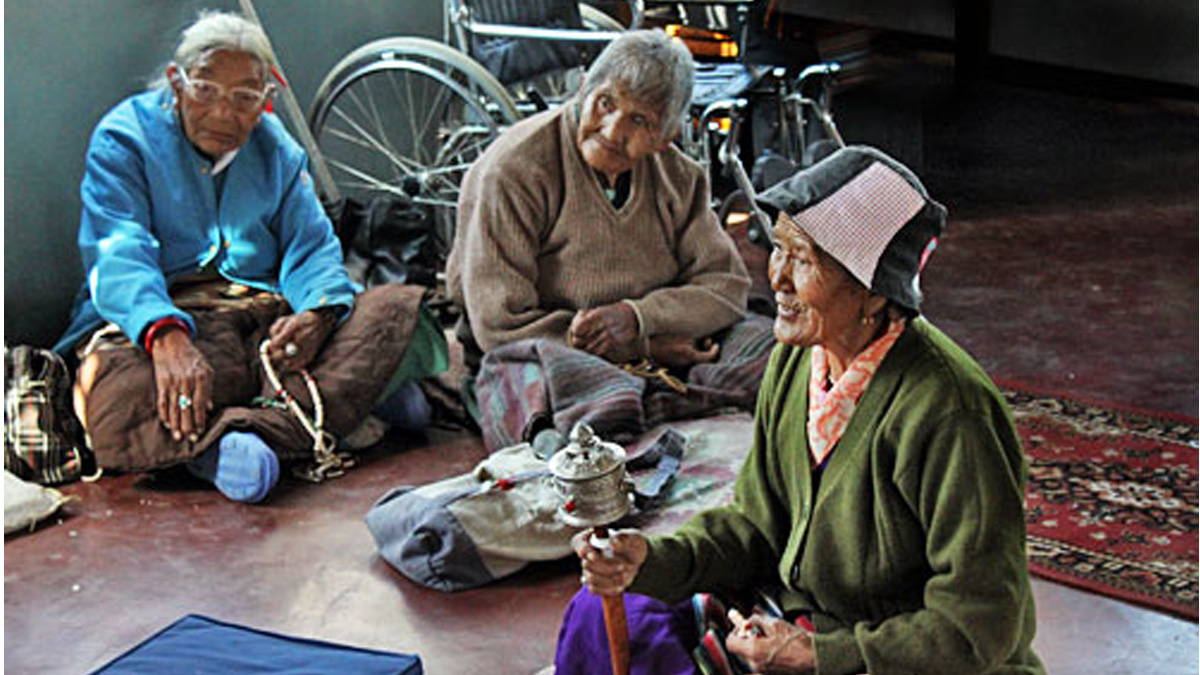
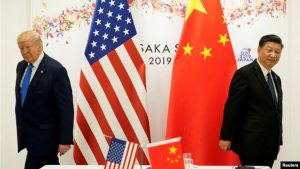



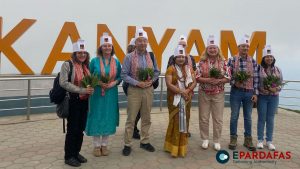
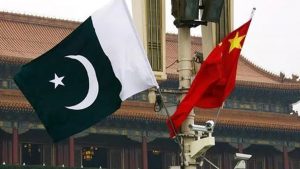


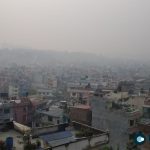

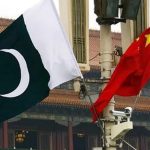

Comments